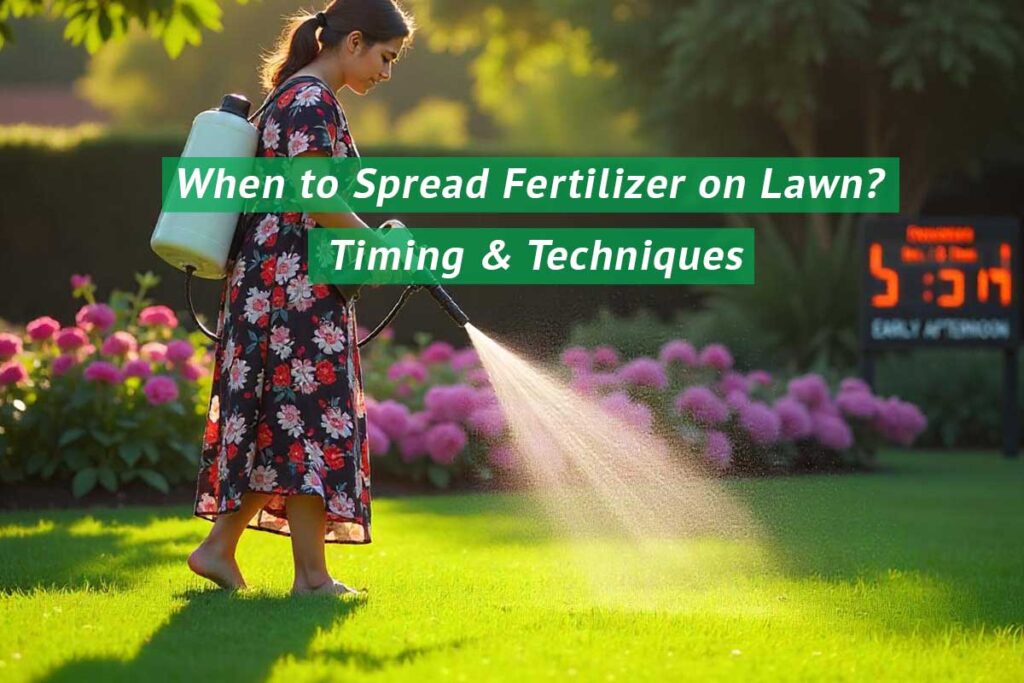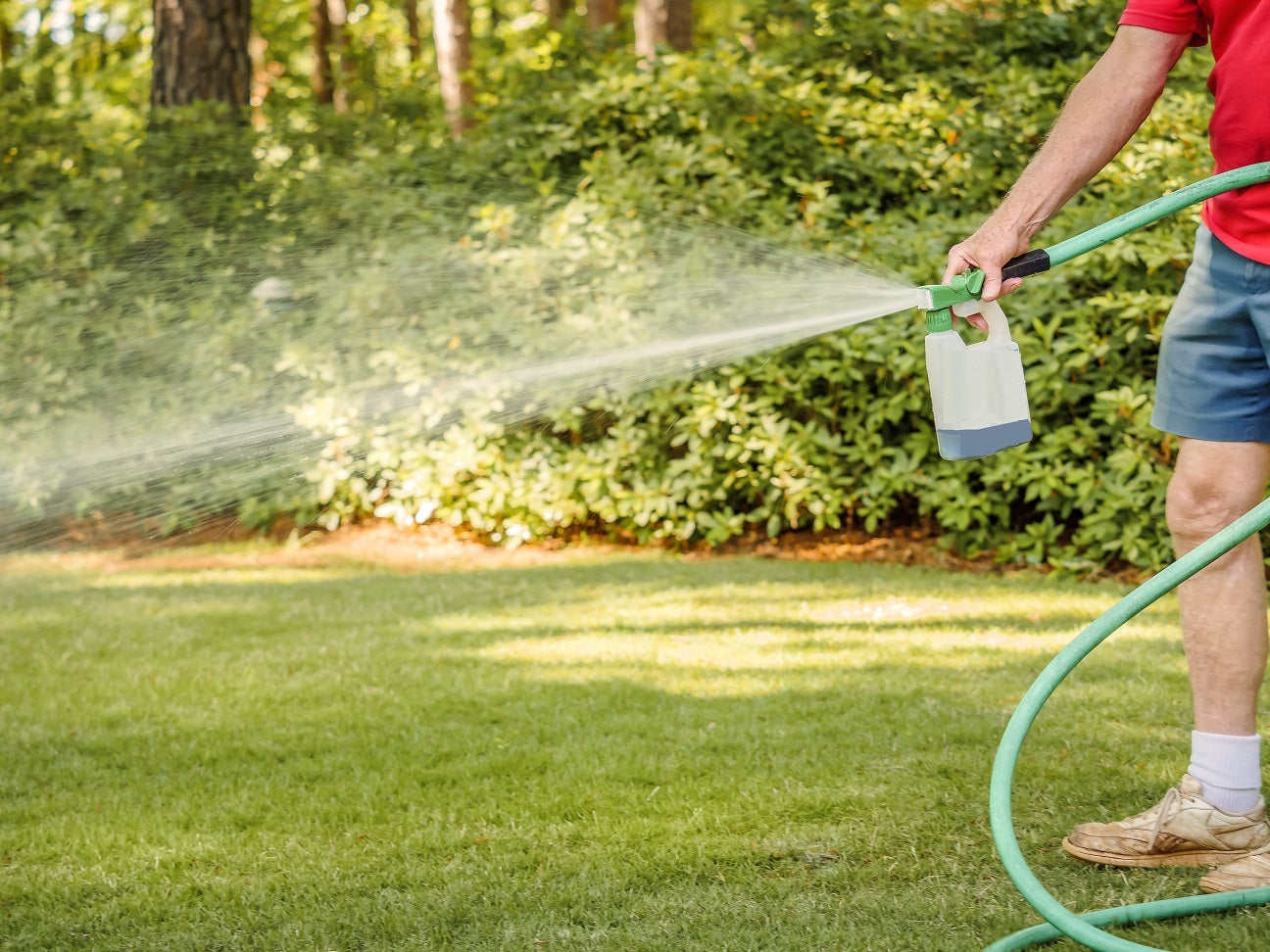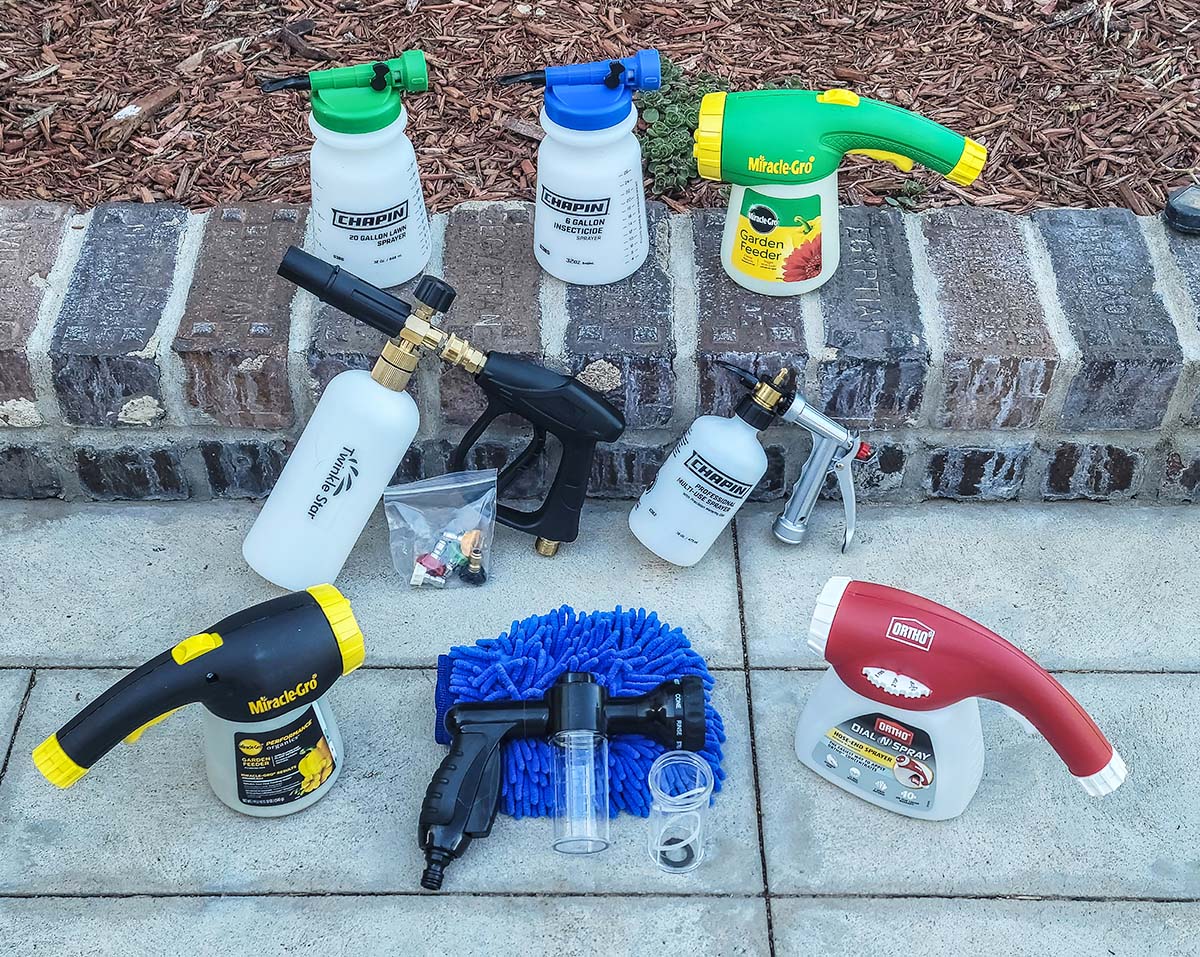When it comes to achieving a lush, green lawn, timing is everything. Understanding when to spread fertilizer on lawn can make all the difference between a thriving yard and a patchy one. But with so many factors to consider, how do you know the right moment?
Different grass types have unique needs, and the seasons play a crucial role in their growth cycles. Whether you have cool-season grasses or warm-season grasses, knowing when to apply fertilizer is vital for optimal health.
In this article, we'll explore the best practices for fertilization throughout the year. From understanding soil temperature to recognizing weather patterns, you'll gain insights that will help your lawn flourish.
Join us as we delve into the essential topic of when to spread fertilizer on lawn, ensuring your outdoor space remains vibrant and healthy all year round.
Table of Contents
ToggleUnderstanding Grass Types
Cool-Season Grasses
Cool-season grasses thrive in the northern regions, where temperatures are moderate. They grow best during spring and fall, making it crucial to understand their specific needs for fertilization timing.
Characteristics and Growth Cycles
- Optimal growth occurs when temperatures are between 60°F and 75°F.
- These grasses often enter dormancy during hot summer months.
- Common types include Kentucky bluegrass, fescue, and ryegrass.
Ideal Fertilization Times
The best times to fertilize cool-season grasses are:
- Early spring, as they wake from dormancy.
- Late summer or early fall, preparing them for winter.
Warm-Season Grasses
Warm-season grasses flourish in southern climates, where temperatures are higher. Understanding their growth patterns is essential for effective lawn care.
Characteristics and Growth Cycles
- They thrive when temperatures reach 80°F to 95°F.
- These grasses grow vigorously in summer and may go dormant in cooler months.
- Popular varieties include Bermuda grass, zoysia grass, and buffalo grass.
Ideal Fertilization Times
The optimal fertilization periods for warm-season grasses are:
- Late spring, as they begin their active growth phase.
- Mid-summer, to support ongoing growth during peak heat.
Seasonal Fertilization Guide
Spring Fertilization
As the weather warms, your lawn begins to wake up from its winter slumber. Spring is a critical time for fertilizing your lawn, as it sets the stage for healthy growth.
Signs of Active Growth in Spring
- Grass starts to green up and grow visibly.
- Soil temperatures rise above 50°F.
- Weeds may begin to appear, indicating soil activity.
Best Practices for Early vs. Late Spring Applications
For early spring applications, consider using a slow-release fertilizer. Late spring applications can benefit from a balanced fertilizer to support robust growth.
Summer Fertilization
During the heat of summer, your lawn may require additional nutrients to stay healthy. Understanding how to fertilize during this season is essential for maintaining vigor.
Nutrient Needs During Hot Months
- Focus on nitrogen to promote green growth.
- Avoid over-fertilizing, which can stress the grass.
- Consider using a fertilizer with slow-release components.
Timing Considerations for Summer Applications
The best time to fertilize warm-season grasses is in late spring or early summer, while cool-season grasses may need minimal fertilization during this period.
Fall Fertilization
As temperatures cool, fall becomes an important season for lawn care. Proper fertilization now prepares your grass for winter dormancy and promotes early spring growth.
Importance of Preparing for Winter
- Fall fertilization helps strengthen root systems.
- Nutrients support recovery from summer stress.
- A balanced fertilizer can enhance overall health before winter.
Recommended Practices for Fall Application
Apply fertilizer in early fall when grass is still actively growing. This timing ensures that nutrients are absorbed before cold weather sets in.
Factors Influencing Fertilizer Timing
Soil Temperature
Soil temperature plays a vital role in determining the best time for fertilizer application. Different grass types have specific temperature ranges for optimal growth.
Optimal Temperature Ranges for Different Grass Types
- Cool-season grasses thrive when soil temperatures are between 50°F and 65°F.
- Warm-season grasses prefer soil temperatures above 65°F.
- Monitoring soil temperature helps ensure effective nutrient absorption.
Weather Conditions
The weather can significantly impact the effectiveness of fertilizer. Understanding how rain and drought conditions affect your lawn is essential for successful fertilization.
Impact of Rain and Drought on Fertilizer Effectiveness
- Heavy rain can wash away nutrients, reducing effectiveness.
- Drought conditions may limit nutrient uptake by grass roots.
- Timing applications just before light rain can enhance absorption.
How Regional Differences Affect Timing
- In warmer climates, warm-season grasses may need earlier fertilization.
- Cooler regions might require adjustments based on frost dates.
- Understanding local weather patterns aids in planning effective applications.
Application Techniques
Granular vs. Liquid Fertilizers
Choosing between granular and liquid fertilizers can impact your lawn's health. Each type has its own advantages and disadvantages, making it essential to understand their differences.
Advantages and Disadvantages of Each Type
- Granular fertilizers are easy to apply and release nutrients slowly over time.
- Liquid fertilizers provide quick nutrient absorption but may require more frequent applications.
- Granular options can be less expensive, while liquid types often offer precise nutrient delivery.
Best Practices for Application
Proper application techniques ensure that your fertilizer reaches the grass effectively. Following best practices can enhance nutrient uptake and minimize waste.
Equipment Needed
- A broadcast or drop spreader is ideal for granular fertilizers.
- A sprayer or hose attachment works well for liquid fertilizers.
- Always calibrate your equipment to avoid over-application.
Safety Precautions During Application
Taking safety precautions is crucial when applying fertilizer. Wear gloves and a mask to protect yourself from chemicals, and keep pets and children away during application.
Common Mistakes to Avoid
Over-Fertilizing and Its Consequences
One of the most common mistakes in lawn care is over-fertilizing. Applying too much fertilizer can lead to nutrient burn, harming your grass instead of helping it.
Signs of Over-Fertilization
- Grass blades appear yellow or brown at the tips.
- Excessive growth followed by wilting or browning.
- Increased pest activity due to weakened grass.
Ignoring Soil Tests Before Application
Another frequent error is neglecting to conduct soil tests. Understanding your soil's nutrient levels is essential for effective fertilizer application.
Benefits of Soil Testing
- Identifies nutrient deficiencies or excesses.
- Helps tailor your fertilization strategy to specific needs.
- Ensures more efficient use of fertilizers, saving time and money.
Timing Issues
Applying fertilizer at the wrong time can diminish its effectiveness. Understanding the right timing for your specific grass type is crucial for optimal results.
Avoiding Timing Mistakes
- Monitor seasonal changes and adjust your schedule accordingly.
- Avoid fertilizing during extreme heat or drought conditions.
- Plan applications around rainfall forecasts for better absorption.
Frequently Asked Questions - FAQS
Q. Best time to fertilize a Kentucky bluegrass lawn in the Pacific Northwest
A. The optimal time to fertilize Kentucky bluegrass in the Pacific Northwest is early spring and fall. Applying fertilizer during these periods promotes healthy growth and enhances the grass's resilience against cold temperatures.
Q. When to apply fertilizer to a Bermuda grass lawn in Florida?
A. For Bermuda grass in Florida, fertilization should occur from late spring through summer. This timing aligns with the grass's active growth phase, ensuring it remains lush and green throughout the warmer months.
Q. Ideal fertilization schedule for tall fescue grass in the Midwest
A. The best fertilization schedule for tall fescue grass in the Midwest includes applications in early spring and late summer. This approach supports robust growth and improves drought resistance during hot months.
Q. How often should I fertilize my Zoysia grass lawn in Texas?
A. In Texas, fertilizing your Zoysia grass lawn should occur 2-4 times annually, primarily during the growing season. This ensures optimal nutrient availability for healthy lawn development.
Q. When is the best time to fertilize a St. Augustine grass lawn in South Carolina?
A. The ideal time to fertilize St. Augustine grass in South Carolina is late spring through summer. This schedule coincides with its peak growth period, enhancing overall lawn health.
Q. Fertilizing a lawn in the spring: tips for cool-season grasses
A. For cool-season grasses, spring fertilization should occur when soil temperatures reach about 55°F. Use a balanced fertilizer to promote vigorous growth and green color as the grass wakes from dormancy.
Q. Best time to fertilize a lawn in the fall for winter hardiness
A. In fall, fertilizing your lawn is crucial for winter hardiness, ideally around mid-September to early October. This application helps strengthen roots and prepares the grass for cold weather.
Q. Should I fertilize my lawn during a drought?
A. During a drought, it's advisable to avoid fertilizing your lawn as stressed grass may not effectively utilize nutrients. Instead, focus on proper watering practices to support recovery once conditions improve.
Q. How to fertilize a lawn in a hot, humid climate?
A. In hot, humid climates, apply fertilizers during cooler parts of the day, such as early morning or late afternoon. Choose slow-release fertilizers to minimize nutrient loss due to heat and moisture.
Q. Fertilizing a lawn in a cold, snowy climate
A. In cold, snowy climates, wait until late spring for fertilization when the ground thaws and grass begins to grow again. This timing ensures that nutrients are available when the grass needs them most.
Q. When to fertilize a lawn with brown patches?
A. Fertilize a lawn with brown patches as soon as you identify the issue, typically in early spring or after significant rainfall. Use a nitrogen-rich fertilizer to promote recovery and green up affected areas.
Q. Best fertilizer for a lawn with weeds
A. For lawns with weeds, select fertilizers that contain pre-emergent herbicides alongside nutrients. This combination helps control weed growth while nourishing your grass effectively.
Q. How to fertilize a lawn after overseeding?
A. After overseeding, apply a light layer of starter fertilizer immediately to encourage seed germination and root development. Ensure consistent moisture for optimal results during this critical growth phase.
Q. When to fertilize a lawn with insect damage?
A. If your lawn shows signs of insect damage, apply fertilizer immediately after treating pests to help recover its health and vigor quickly while promoting new growth.
Q. How to fertilize a lawn that’s slow to grow?
A. For lawns that are slow to grow, use a balanced fertilizer with adequate nitrogen content and ensure regular watering practices are followed to enhance nutrient absorption and stimulate growth.
Q. When to apply slow-release fertilizer to a lawn?
A. Apply slow-release fertilizer at the beginning of the growing season when temperatures warm up consistently, allowing nutrients to be gradually available as your grass actively grows.
Q. Best time to use organic fertilizer on a lawn
A. The best time for applying organic fertilizer is during the growing season, particularly in early spring or fall, as it promotes healthy microbial activity while enhancing soil fertility naturally.
Q. When to apply synthetic fertilizer to a lawn?
A. Synthetic fertilizers should be applied during peak growing seasons—early spring or summer—when grasses can effectively utilize nutrients for optimal growth and color enhancement.
Q. How often should I fertilize my lawn with granular fertilizer?
A. Granular fertilizers should be applied every 6-8 weeks during the growing season for optimal results, ensuring consistent nutrient availability without overwhelming your grass.
Q. When to use a liquid fertilizer on a lawn?
A. Use liquid fertilizers when quick nutrient uptake is needed or during periods of rapid growth; typically every 4-6 weeks can enhance overall health and appearance of your lawn.
Conclusion
Recap of Key Points on Timing and Techniques
Understanding when to spread fertilizer on lawn is essential for achieving a vibrant, healthy yard. From recognizing grass types to seasonal considerations, each aspect plays a vital role in lawn care.
Importance of Proper Fertilization
Applying fertilizer at the right time and using the appropriate techniques ensures that your lawn receives the nutrients it needs. This not only promotes growth but also enhances resilience against pests and diseases.
Your Lawn Deserves Care
Investing time in understanding your lawn's requirements will pay off in the long run. With proper fertilization practices, you can enjoy a beautiful outdoor space that enhances your home’s curb appeal.
By following the guidelines outlined in this article, you can cultivate a lush, green lawn that thrives throughout the seasons. Regular monitoring and adjustments based on your lawn's specific needs will yield the best results.




